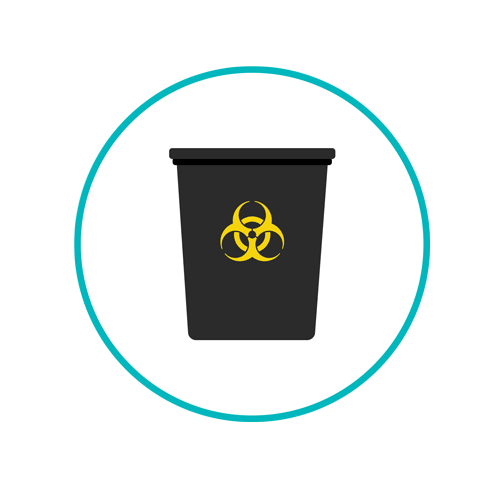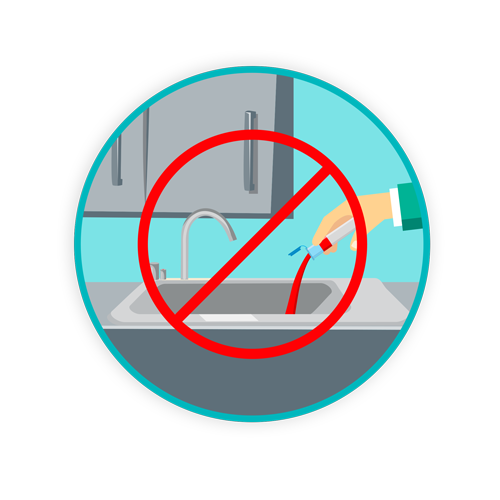Biomedical Waste Guidelines for Burnaby, British Columbia

Burnaby is considered a suburb, or metropolitan branch of Vancouver, British Columbia. The city of Burnaby is the third largest within the province, with a population of just over 230,000. Those who live in Burnaby have access to hospitals and medical centres, veterinary facilities, ambulance and first responder services, rehabilitation and long-term care centres, and surgical outpatient centres.
Burnaby is also home to Burnaby Hospital, a 300+ bed facility, one of the largest outside of Vancouver itself. That one hospital alone provides services to roughly 85,000 patients a year! Can you imagine the volume of biomedical waste generated in Burnaby city alone?
A lot.
Is your Burnaby medical facility compliant when it comes to biomedical waste management? Does your staff follow the regulations of British Columbia (and the government of Canada) when it comes to biomedical waste guidelines?
TOPICS WE WILL COVER:
1 / What Local Regulations Say
2 / Storage of Biomedical Waste
3 / Transportation and Disposal
5 / Call Authorities if in Doubt
6 / How Daniels Health Supports
What do the Rules Say?

Throughout British Columbia, and Canada itself, biomedical waste means “any waste defined as biomedical waste in the hazardous waste regulation, B.C. Reg. 63/88.”
What does that mean? In many regions throughout Canada and elsewhere, terminology and specific wording used to apply to biomedical waste is interchangeable with other words and terms. For example, hazardous waste can also be infectious. Infectious waste can also come from biomedical waste due to the presence of infected blood, for example. In other words, biomedical, infectious, and hazardous waste have the potential to harm not only the environment, but human health.
All medical waste generators, especially those creating biomedical waste, should be familiar with British Columbia’s Environmental Management Act, which states that biomedical and hazardous waste both infer ‘the prescribed meaning’. Okay, so sometimes, finding specific rules and regulations and governmental agencies can be challenging.
According to the government of Canada, biomedical waste is defined as “waste generated in human and animal healthcare facilities, medical or veterinary research and training facilities, clinical testing or research laboratories, as well as vaccine production facilities.”
Biomedical waste is to be separated from general waste streams before disposal because it requires decontamination processes. Methods for such practices are further defined in detail by individual provinces and territories. However, the guidelines for the management of biomedical waste in Canada have set minimum standards for the management of such waste throughout all provinces and territories in the country.
The government of Canada provides the Canadian Biosafety Handbook. Refer to Chapters 16 through 20 for relevant information regarding:
- Biosafety programs
- Movement and transportation
- Standard operating procedures
- Decontamination processes to reduce infectious pathogens, toxins, or infectious materials from waste
Does your staff know the regulations for storing and disposing of medical waste?
Storage of Biomedical Waste

Per the Canadian government, all biomedical waste is to be decontaminated before disposing of in a regular waste stream. Segregation at the point of origin is strongly urged. Colour-coded waste bags and containers are to be used in medical facilities to differentiate waste types.
The waste bags themselves are then to be placed in either leak-proof containers or can be refrigerated or stored in cold rooms or freezers for decontamination. It is permissible to use reusable containers, but only if they are cleaned and decontaminated following every use.
Temporary storage is allowable for items that have not been decontaminated or disposed of immediately. Storage must be in an area separate from other storage areas and marked with the biohazard symbol. Anatomical waste, whether it comes from humans or animals, must be stored in a refrigerated area.
After decontamination on-site, the biohazard symbol can be removed or crossed out as an indication that any infectious materials found within have been inactivated. Only after it’s been decontaminated can such materials be disposed of as regular waste. Compliant labelling procedures must still be in place.
As such, it’s also important, especially when waste is transported off-site, that the waste be placed in appropriate containers that are appropriately labelled. Keep any kind of infectious waste separated from regular waste until the decontamination processes has been completed.
Sharps are to be disposed of in to a puncture resistant container that follows the guidelines of the National Standard of Canada.[1]
Transportation and Disposal
Chapter 20 of the Canadian Biosafety Standards Guidelines specifies that movement and/or transportation of any biological materials that have the potential to contain toxins or infectious materials - such as laboratory waste through processes and procedures - within a hospital environment should only occur within a containment zone or building. As per the guidelines, the term “transportation” defines the act of transporting materials from one location or building to another, or within provincial boundaries within Canada as a whole.
Transfer or transportation of infectious substances comes under the purview of the Transportation of Dangerous Goods Act and its regulations.
Note: Any facility handling biomedical or potentially infectious or hazardous materials must have an emergency response plan. Instructions for such are to be made available for immediate and appropriate responses in the event of accidents, spills, or breakage.

Don't Pour Stuff Down the Drains!
In 2018, the city of Vancouver and its metro areas were ‘ordered’ to devise a pollution prevention plan (bylaw No. 319 - Regulate the discharge of waste from hospitals), requiring local hospitals to assess processes and operations, focusing on reducing or completely eliminating pollutants from wastewater sources. The core requirements of this prevention plan was to include, among other things, biomedical waste and unused drugs. Burnaby Hospital, as part of the Fraser Health Authority of healthcare providers, were included in this plan.
The bylaws were approved per the authorization of the greater Vancouver Sewage and Drainage District Act as well as the Environmental Management Act. The bylaws state that “hospitals produce waste that when discharged or discarded into sewers or drains, may impact sewers, sewage facilities, human health and the environment.” That means biomedical, hazardous, and radioactive wastes. Fines for not following the provisions of the law rise to $10,000. While this particular regulation pertains to wastewater, there’s more to be aware of.
If in Doubt, Contact Local Autorities
Biomedical waste generators are required to have permits and approvals prior to disposing of biomedical, infectious, or hazardous waste. Canada’s hazardous waste regulations provide detailed guidelines for compliance in the handling and disposal of such wastes.
That said, British Columbia has their own definitions and classifications of biomedical waste. Producers of biomedical waste can also access the government website of British Columbia for a number of provincial as well as national links that are educational for healthcare waste generators. Links include the British Columbia Environment Industry Association and the British Columbia Ministry of Transportation and Infrastructure.
Be Compliant. Be Safe.
Daniels Health wants to remind facilities in Burnaby, British Columbia, as well as other towns and cities throughout British Columbia, to be aware that the rules and regulations of every province must be followed. So too must the provisions of the federal government. Maintain compliance to reduce the risk of dangers or exposure of potentially harmful materials to your employees, your facility, and your city.
For more information on how Daniels Health can help your facility stay on top of ever-changing guidelines and regulations, contact us today. Alternatively find out more about our Burnaby operations and service capabilities on our Burnaby service page here.
When it comes to healthcare waste segregation and management, don't take chances.
Call Daniels Health for help setting up a workable and safe healthcare waste management system
[1] CAN/CSA Z316.6-14 Sharps Injury Protection - Requirements and Test Methods - Sharps Containers. (2014). Mississauga, ON, Canada: Canadian Standards Association.
